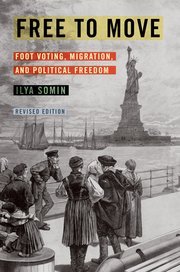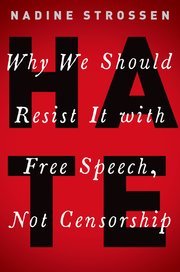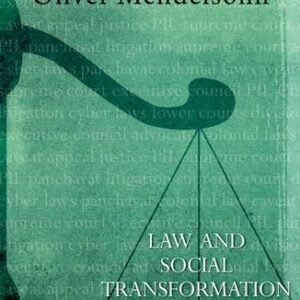HATE (Why We Should Resist it With Free Speech, Not Censorship) by Nadine Strossen – Edition 2018
Original price was: ₹1,295.00.₹1,165.00Current price is: ₹1,165.00.
HATE (Why We Should Resist it With Free Speech, Not Censorship) by Nadine Strossen – Edition 2018
Available on backorder
Description
HATE dispels misunderstandings plaguing our perennial debates about hate speech vs. free speech, showing that the First Amendment approach promotes free speech and democracy, equality, and societal harmony. We hear too many incorrect assertions that hate speech which has no generally accepted definition is either absolutely unprotected or absolutely protected from censorship. Rather, U.S. law allows government to punish hateful or discriminatory speech in specific contexts when it directly causes imminent serious harm, but government may not punish such speech solely because its message is disfavored, disturbing, or vaguely feared to possibly contribute to some future harm. When U.S. officials formerly wielded such broad censorship power, they suppressed dissident speech, including equal rights advocacy. Likewise, current politicians have attacked Black Lives Matter protests as hate speech.
Hate speech censorship proponents stress the potential harms such speech might further: discrimination, violence, and psychic injuries. However, there has been little analysis of whether censorship effectively counters the feared injuries. Citing evidence from many countries, this book shows that hate speech laws are at best ineffective and at worst counterproductive. Their inevitably vague terms invest enforcing officials with broad discretion; predictably, regular targets are minority views and speakers. Therefore, prominent social justice advocates in the U.S. and beyond maintain that the best way to resist hate and promote equality is not censorship, but rather, vigorous counterspeech and activism.
GLOSSARY
INTRODUCTION
Distinguishing between vile words and violent conduct
U.S. law’s appropriate distinction between protected and punishable discriminatory speech
More speech, not less
CHAPTER 1) Overview
“Top 10” conclusions
What is “hate speech”?
“Hate speech” laws endanger both freedom and equality
Campus censorship
Why should we specially protect “verbal conduct”?
Beyond the First Amendment
The U.S. law approach has substantial international support
“Hate speech” laws long were opposed by other democracies
The anti-democratic enforcement of “hate speech” laws even in democracies
Private sector institutions should protect speech
Cost-benefit analysis of “hate speech” laws
President Obama’s opposition to “hate speech” laws
Non-censorial alternatives
CHAPTER 2) Distinctions between punishable and protected discriminatory speech
Under U.S. law, much discriminatory speech may be punished, and all may be condemned
The multiple contexts in which discriminatory speech may be outlawed
Private sector
Government
Content-neutral regulations
Special-purpose facilities
Symbolic endorsement
Counterspeech
Punishing discriminatory speech under the emergency test
True threats
Punishable incitement
—Punishable fighting words
Punishable harassment
—Targeted harassment
—Hostile environment harassment
Facilitating criminal conduct
Bias crime
Civil lawsuits by private citizens
Invasion of privacy
Intentional infliction of emotional distress
Group defamation claims undermine free speech and equality
Constitutionally protected “hate speech”
The content neutrality and emergency principles: essential pillars of liberty and equality
CHAPTER 3) “Hate speech” laws’ inherent vagueness and overbreadth
From the frying pan to the fire: too flexible or too rigid
One person’s hateful, hated speech is another’s loving, cherished speech
Endangering minority views and speakers
Targeting dissent
Targeting minority groups
Campus “hate speech” codes
Social media bans on “hate speech”
Current targeting of marginalized views in comparable democracies
France: Bob Dylan criminally charged because of a statement in a magazine interview
Britain: European Parliament candidate arrested during a campaign speech
for quoting Winston Churchill
Netherlands: Member of Parliament convicted because of a question he asked at a political rally
Denmark: Member of Parliament and three other public figures convicted for criticizing aspects of Islam
Sweden: Political party leader convicted for assertion about immigrants’ crimes
Austria: A citizen’s Facebook post criticizing a public official is deemed “hate speech” that Facebook must delete worldwide
Many European countries: Christian and Muslim religious leaders charged for quoting their sacred texts
The slippery slope
CHAPTER 4) Would censoring constitutionally protected “hate speech” reduce its potential harmful impact?
Would “hate speech” laws reduce any feared harm?
Inevitable underenforcement
Targeting only blatant expression
Driving some expression underground
Incentivizing more palatable speech
Increasing attention and support
Enforcement frustrations
Would “hate speech” laws reduce….
….inter-group hostility?
…retaliatory violence?
…psychic harms?
No correlation with reduced discrimination or violence
The rise of Nazism in Germany despite “hate speech” laws
No inter-country correlation
No intra-country correlation
Would “hate speech” laws have a positive symbolic value?
What potential contribution does constitutionally protected “hate speech” make to the feared harms?
Inherently limited contribution
Studies about violence and pornography
Countless contributory factors
Some discriminatory speech does not spur negative psychic reactions
“Hate speech” law advocates cite much discriminatory speech that is already punishable
Substantial factual changes since the pioneering legal articles advocating “hate speech” laws
Increasing counterspeech by disparaged people
The cost-benefit analysis so far
CHAPTER 5) What non-censorial measures would reduce the feared harmful impact of constitutionally protected “hate speech”?
Counterspeech
Responsive
Proactive
Government
All of us
Online
Education
Developing thicker and thinner skin
Apologies
Anti-discrimination laws
Monitoring discriminatory violence
Improving police interactions with minority communities
Proactive outreach and interaction
More inclusive campuses
Self-restraint and social pressure
Self-regulation
CHAPTER 6) What are the potential costs of “hate speech” laws?
What potential costs to equality and societal harmony?
Undermining a mainstay of equal rights movements
Deflecting responsibility from people who engage in discriminatory conduct
Disempowering disparaged people
Diverting us from more effective strategies
Undermining constitutional challenges to discriminatory policies
What potential costs to free speech and democracy?
Freedom of speech’s intrinsic and instrumental value
Freedom of speech is essential …
…for individuals to form and express their thoughts
…for individuals to convey their emotions
….for democratic self-government
…for defending all other rights
Essential protection of messages that are disfavored or feared to have a general bad tendency
Dangers of subjective criteria in speech regulations
Speech conveying disfavored ideas may well be self-refuting
The appropriate response to disfavored speech is counterspeech
Government may not suppress speech…
…to shield unwilling listeners in public places
…to outlaw certain words
…because it is motivated by hate
…because it is hurtful
…due to feared retaliatory violence
Government may censor speech in accordance with the emergency principle
The comparative risks of freedom and censorship
Democratic legitimacy
“Hate speech” laws’ costs outweigh their benefits
CHAPTER 7) Do It Yourself challenge: Try to craft an acceptable “hate speech” law
How should a “hate speech” law define the newly punishable subset of what is now constitutionally protected “hate speech”?
What personal characteristics should it protect?
Should it protect beliefs?
Should it bar statements about historical events?
If it requires any showing about potential harm…
…what kind of potential harm?
…how likely should it be to materialize?
…how direct and imminent should the connection be between the speech and the potential harm?
…should the potential harm be assessed by a subjective or objective standard?
What mental state should be required?
Should the speech have to target an individual or small group?
Should it extend to speech in private places, and to personal conversations?
Should it take into account…
…the identities of the speaker and the disparaged people?
…any other contextual factors?
Should it provide any affirmative defenses?
Should it exempt speech by public officials or candidates?
Should it be criminal or civil?
What remedies and penalties should it provide?
Should there be any threshold procedural requirements?
How have you done?
APPEN DIX A: Protected personal characteristics and beliefs under various “hate speech” laws
APPENDIX B: Punishable messages under various “hate speech” laws
CHAPTER 8) Conclusion: looking back – and forward
Additional information
| BINDING | Hardcover |
|---|---|
| AUTHOR | Nadine Strossen |
| EDITION | 2018 |
| ISBN | 9780190859121 |
| PUBLICATION | Oxford University Press |








Reviews
There are no reviews yet.